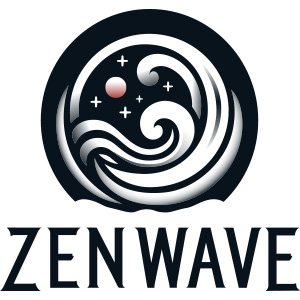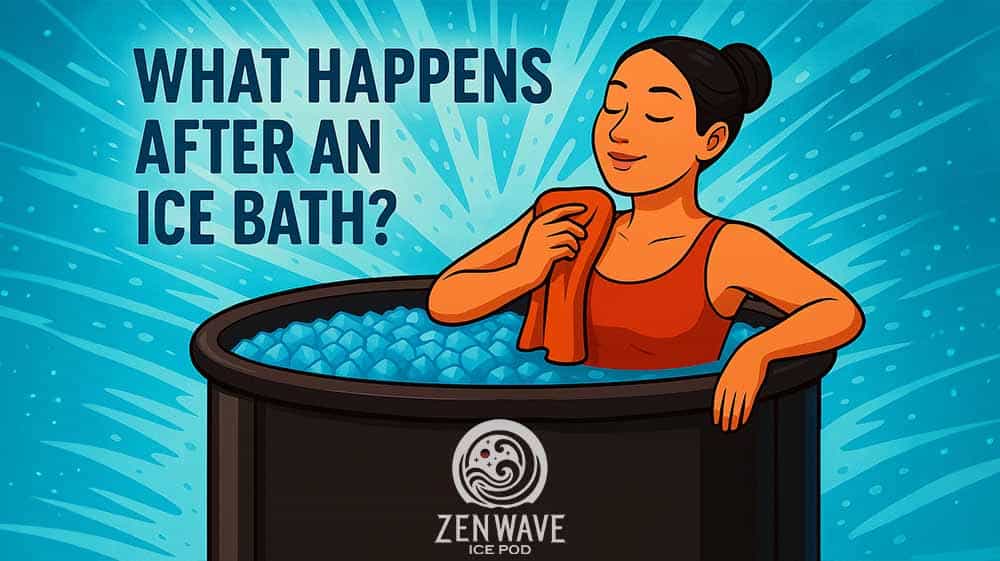you’ve just stepped out of the ice bath — skin tingling, breath steadying, nervous system buzzing. But what happens next?
The truth is, the recovery phase after cold water immersion is where all the real benefits of an ice bath take root. If you understand how to handle this window, you unlock improved circulation, faster recovery, better mood, and long-term adaptation.
If you don’t? You risk missing out entirely — or worse, walking away from your plunge feeling drained instead of recharged.
This article breaks down exactly what happens after an ice bath, why this phase matters for health and performance, and how to get the most out of it — step by step.
This guide breaks down what your body actually does after the plunge — and what to do (and avoid) to get every drop of benefit.
Want a full crash course first? Here’s our beginner’s guide to ice baths so you can understand the foundation before dialing in recovery.
Phase 1: 0–15 Minutes After You Get Out
Getting out doesn’t mean you’re in the clear.
In fact, your core temperature continues to drop even after you towel off. This delayed effect is called afterdrop in cold plunging — it’s your body redistributing cold blood from the limbs back to the core. That’s why you often feel even colder 2–5 minutes after the plunge.
This is the most misunderstood part of the practice. People think, “I did the hard part, I’m done.” But in reality, this is where the body starts making hormonal and neurological decisions based on what you do next.
Here’s what actually helps:
- Stay standing — lying down can trigger dizziness
- Layer up — hoodie, beanie, thick socks
- Use a warm-up protocol specific to ice baths that helps you reheat without cancelling your adaptation gains
Breath control matters just as much after your plunge as it does before. Stay calm. Keep your exhale longer than your inhale. That’s how you move your system into recovery mode.
If you’re tired of ice bags and janky tubs, the ZenWave Ice Pod was built to make this routine dead simple — no more melting mess or freezer hacks.
Phase 2: 15–60 Minutes After
Once the shivering fades, your nervous system finally starts integrating the stimulus. You’ll likely feel alert, clear, maybe even euphoric. That’s norepinephrine and dopamine doing their thing.
This is the window where the body moves from fight-or-flight into recovery mode. If you don’t support this phase intentionally, you’re missing the point entirely.
To lock in the gains:
- Go for a short walk or light stretch
- Focus on nasal breathing or box breathing
- Sit in stillness or write — this is the clarity phase
Use this window intentionally. Want to program your mindset for the day? Reflect. Visualize. Anchor that cold-earned clarity into your goals.
Curious how cold exposure affects mood and emotional stability? Here’s how ice baths help with stress recovery and anxiety regulation.
Take note of your body signals here. If you feel wired, warm, and mentally sharp — you did it right.
Phase 3: 1–4 Hours After
The hours after your plunge aren’t just about feeling good — they’re when your body locks in the cold exposure stimulus and shifts into deeper adaptation.
You might feel calm, focused, or even energized. That’s a result of elevated norepinephrine, stabilized cortisol, and increased dopamine — the neurochemical trifecta ice baths are known for.
This is the window to:
- Lean into deep work, creative focus, or reflective time
- Avoid overtraining — let your body process, not push
- Stay hydrated and eat light to support parasympathetic dominance
Still shivering? That’s okay. Cold-induced thermogenesis may still be happening — your body is literally burning fuel to warm itself back to baseline, and that’s part of the metabolic advantage.
This is often when you’ll notice your energy levels stabilizing, mental clarity staying elevated, and your body feeling more recovered and alert — all signs your system is locking in the cold exposure response.
What Not to Do (Seriously)
These Kill the Gains Fast
The most common mistakes happen after the plunge:
- Jumping into a hot shower
- Loading up on carbs
- Lifting heavy while still cold
These habits confuse your nervous system and blunt adaptation. If you’re not sure how to recognize dangerous limits, check this guide to ice bath risks from water that’s too cold.
Another one? Scrolling social media right after. Let your body and mind integrate the experience instead.
Want to rewire your tolerance to discomfort? Honor the quiet period after the plunge. That’s where your nervous system learns it’s safe to face hard things.
Let your body ride the full wave of recovery. That’s the point.
The 15-Minute Post-Plunge Routine
A Protocol You’ll Actually Use
Here’s what we do personally after a morning plunge — no fluff:
| Time | Action | Why It Works |
|---|---|---|
| 0–2 min | Towel off, stay upright | Prevent dizziness, manage afterdrop |
| 2–5 min | Light walk or mobility work | Boost blood flow without stress |
| 5–10 min | Focused breathwork | Signals your nervous system to shift gears |
| 10–15 min | Tea, electrolytes, sunlight | Replenishes minerals, kickstarts the day |
You don’t need 10 tools or a cold-plunge “biohacking stack.” This sequence alone drives the core benefits — just do it consistently.
Want to optimize your setup? Here’s our checklist of ice bath gear essentials.
Already plunging regularly? These recovery habit upgrades after cold immersion will help take it further.
Add a journal. Note your mindset, mood, energy, and recovery. You’ll learn how to tune your practice faster than any app could do for you.
Why This Recovery Window Matters
This 60-minute window is where your body adapts — or doesn’t.
Do it right, and you get:
- Lower baseline stress
- Better metabolic flexibility
- A legit mood lift that lasts hours
It’s easy to think the hard part is over when the timer runs out. But if you treat this post-plunge window as part of the protocol — not an afterthought — you’ll recover faster, feel better, and actually build resilience over time.
It’s also when your identity shifts. You’re not just someone who did an ice bath — you’re someone who handled it well. Who recovered on purpose.
Want to understand the deeper thermogenic effects? Here’s how brown fat activates through ice baths.
And if you’re wondering how to time your plunges, check out this breakdown on how often to cold plunge for results.
Final Take
The ice bath isn’t the finish line — it’s the trigger. What follows is where the real transformation happens.
Recovery is how your nervous system locks in the benefits. Skip it, and you short-circuit the gains. Embrace it, and you turn discomfort into adaptation, resilience, and long-lasting energy.
If you want a no-hassle way to stay consistent, the ZenWave Ice Pod makes cold plunging easy, repeatable, and reliable.
Plunge hard. Recover with purpose.

